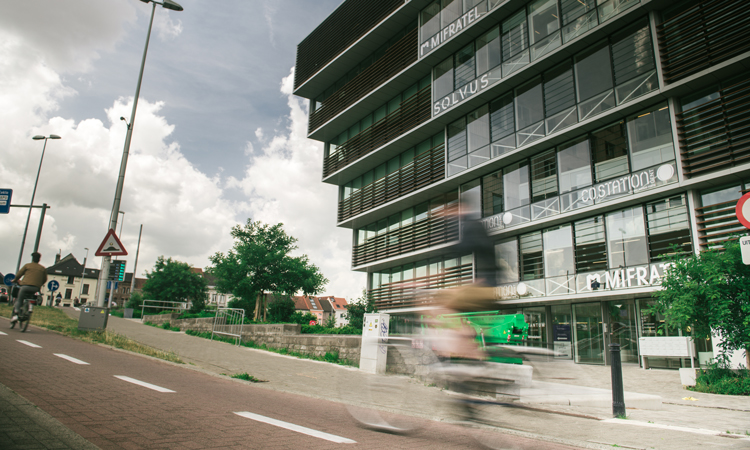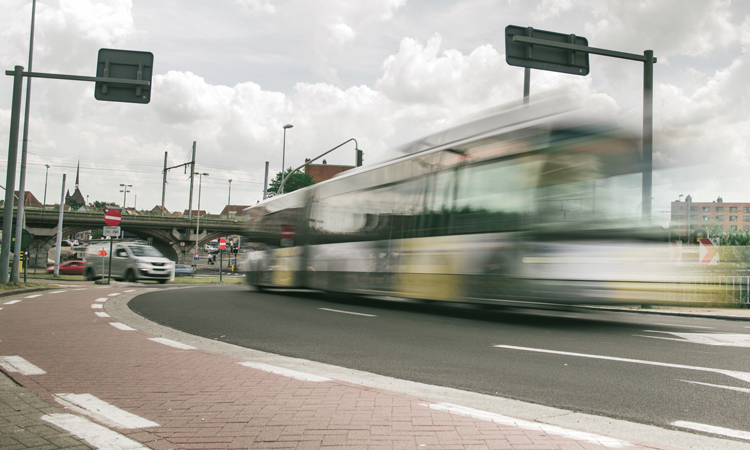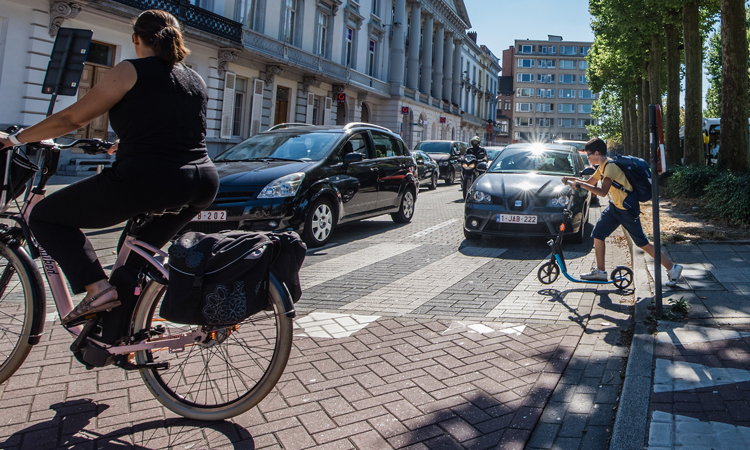TMaaS: a revolution in urban traffic management
- Like
- Digg
- Del
- Tumblr
- VKontakte
- Buffer
- Love This
- Odnoklassniki
- Meneame
- Blogger
- Amazon
- Yahoo Mail
- Gmail
- AOL
- Newsvine
- HackerNews
- Evernote
- MySpace
- Mail.ru
- Viadeo
- Line
- Comments
- Yummly
- SMS
- Viber
- Telegram
- Subscribe
- Skype
- Facebook Messenger
- Kakao
- LiveJournal
- Yammer
- Edgar
- Fintel
- Mix
- Instapaper
- Copy Link
Posted: 28 August 2018 | Evert Gellynck - Be-Mobile, Sidharta Gautama - University of Ghent, Sophie Gillaerts - City of Ghent | No comments yet
The Traffic Management-as-a-Service project team – Sophie Gillaerts, Team Leader at City of Ghent, Evert Gellynck, Traffic Engineer at TMaaS partner Be-Mobile, and Prof. Dr. Ir. Sidharta Gautama, Business Developer at UGent Innovation Centre for Intelligent Information Processing (i-KNOW) – talk about the project’s implementation and challenges.


Can you give us a brief explanation about the TMaaS project?
Evert Gellynck: TMaaS will be a modular platform that brings together existing data from different partners about urban mobility. It not only visualises, but also interprets the mobility data that is fed into it, and alerts operators when necessary. Operators and cities can set thresholds and configure preferences for those alerts. They can, in real time, see the status of all transport modes on a dashboard and view historic data. The platform should be able to connect to physical systems, like variable-message signs or traffic lights. The targeted user group for this platform includes the city and its traffic operators, as well as its residents. The first phase is to roll out this concept in Ghent, and at a later stage in other cities. The defining aspect of TMaaS is that it is built by people. It is radically different from previous traffic centres as it is based on a fully digital and virtual platform that processes traffic data and provides real-time information. To achieve this up-to-the-minute information flux, the data is processed and distributed to the users automatically.
Could you tell us more about the current status of the project?
Evert Gellynck: The venture began in February 2018 with a world-class team of researchers, developers and innovators. Our mission was to build an online traffic management centre for cities around the globe. The project will take three years, and is broken down into three phases. The first year will be dedicated to research, with a focus on ascertaining what is required to build the platform, and the characteristics for the traffic management services for both the cities and the end users (i.e. the residents of the cities using the platform). During this stage we will be working closely together with Ghent University and KU Leuven. Among other things, we want to determine what information people would find interesting and what they would like to see on the platform dashboard. The same goes for the traffic operators: what would they like to see included in the platform when offering traffic management as a service to local residents? What information do they need to incorporate into the platform? We will look at the best way to develop the platform based on all of the requirements provided. We are also collecting as much data as possible about the city of Ghent, which we will add to an already-existing large volume of data that will eventually be integrated into the platform.


Information about bicycle parking is one of a number of data feeds users can subscribe to in TMaaS
How important was it to have residents play a role in the process right from the start?
Sophie Gillaerts: Getting citizens on board is one of our main focal points. Our TMaaS citizen research project, carried out by project partner KU Leuven, is a good example. They recently launched an online call for citizens to participate in the first TMaaS citizen research project. This focuses on the mobility behaviour of residents in the city of Ghent, as well as that of visitors. Throughout April and the first half of May 2018, researchers carried out a mobility diary survey that included mobility tracking and interviews.
The second year will see the actual implementation of the platform in the city of Ghent. Do you foresee any potential problems arising here?
Evert Gellynck: At this point it is hard to predict any potential problems, as we are still in the research phase. I am sure that some problems will pop up once the platform has been launched – I think that’s only logical – but these will offer us an opportunity to make the concept even better. During our extensive research we have discussed the platform with all kinds of partners and with people from different backgrounds with differing opinions; we want to make sure that our platform covers the mobility expectations of as many people and stakeholders as possible. However, once the platform is up and running, I imagine other questions and requirements will also arise, so I can see ourselves continuing to develop the project after the actual launch. We can’t predict the future, but I am sure that ongoing improvements to TMaaS will be a high priority for us.
How will the platform work on a day-to-day basis?
Evert Gellynck: Residents will have the opportunity to log in to the platform and use the data to simplify their lives in terms of mobility. They will be able to choose the data they want to see on the dashboard, enter their favourite routes and get information about the traffic on that route. This will enable them to avoid traffic jams on their way to work, or to find out if there are delays affecting the buses or trains they will need. The advantages of the system for the City of Ghent and the residents who subscribe are myriad: residents can gain immediate access to information about means of transport or their favourite routes; subscribers will receive real-time and personalised traffic advice about their neighbourhoods or journeys (i.e. accidents, traffic jams, delays, availability of vehicles in car-sharing networks, train timetables, bicycle parking, car parking spaces, weather updates, etc.). Commuters will not only be informed about their journeys, they will also be notified of alternatives where necessary, enabling residents to travel in the most efficient, safe, sustainable and enjoyable way possible. Furthermore, City of Ghent employees will be able to monitor all mobility data, and use it to adjust traffic lights, inform residents, and evaluate and prepare mobility measures, among other tasks. We will try to tell residents about the platform via all kinds of channels. The city itself will promote the use of TMaaS via social media for one. Newsletters will also be sent out to interested residents and the project will be discussed at conferences.


TMaaS will be developed so that it’s adaptable to new technology and trends
What are the innovative aspects of TMaaS?
Sidharta Gautama: Current urban mobility centres are unable to provide local residents with personalised information. The Traffic Management as a Service system uses readily-available data from various partners and companies and is multimodal. In other words, it takes different means of transport into account, which will all be integrated into the user dashboard. To achieve this, the system automatically checks all incoming data about journeys by bike, bus, tram, train, or on foot, and based on this, sends the necessary information based on each individual’s personal preference to each commuter via social media. What is also quite revolutionary is the fact that TMaaS is a unique collaboration between the government, industrial partners and universities. Like Mobility-as-a-Service, whereby different transport providers work together in order to offer one solution, the challenge for TMaaS is not just technological, but also organisational. Traffic systems are still closed systems whereby the data and the platforms are offered and managed from one single company. Given that the problems in our towns are becoming increasingly complex – multimodal mobility, urban logistics, the environment, energy, etc. – these types of monolith systems are becoming inadequate. Breaking open these systems, together with the industrial partners of TMaaS, is an important ambition.
Who are the partners making the collaborative venture of Traffic Management as a Service possible?
Sophie Gillaerts: Ghent University and KU Leuven are important knowledge and innovation partners of the City of Ghent on this project, as is TomTom, a global leader in navigation and mapping, which has a large subsidiary office in Ghent. The city is looking forward to spending the majority of the European funding on supporting and promoting innovative companies and start-ups. A Ghent-based start-up that will be involved is the software company Waylay. Be-Mobile, a market leader in smart mobility, and the communications agency B.Bloom will also play an important role.
TMaaS technology in six steps
TMaaS will be built on an open, modular data platform that facilitates adapting to new technological trends and innovations.
- Data collection
We collect data from our partners and an extensive list of other sources.
- Data normalisation
We fuse the data from multiple sources to gain meaningful and reliable insights into mobility. After the initial data processing, we will have data flow output for developers and TMaaS end users.
- Expert system
We add intelligence to support decision making and detect abnormalities in personalised traffic data.
- User preferences
This is the great bit – the end user gets to transform their preferences into a personalised TMaaS dashboard.
- User dashboard
A multi-layered modular interface for use by both professionals and local residents.
- Two-way communications
TMaaS will give cities the tools to talk and listen to their citizens by means of clever social media integrations.


TMaaS is being developed not only for transport operators, but for their customers too
Reference
- UIA, short for Urban Innovative Actions, is an initiative of the European Union that provides urban areas throughout Europe with resources to test new and unproven solutions to address urban challenges.
Biographies






Related topics
Passenger Experience, Traffic Management
Related cities
Belgium
Related organisations
Be-Mobile, City of Ghent, University of Ghent
Related people
Evert Gellynck, Sidharta Gautama, Sophie Gillaerts








